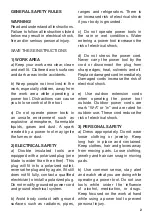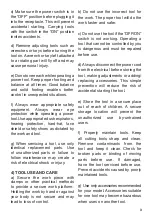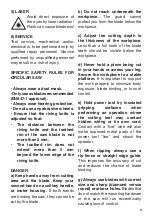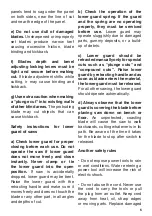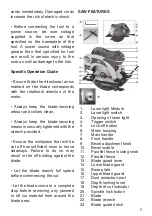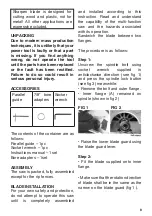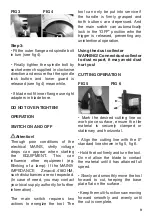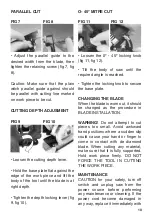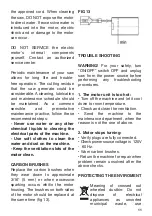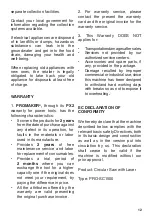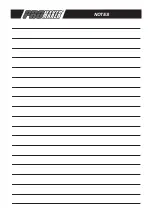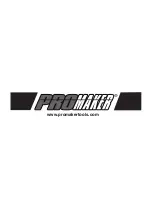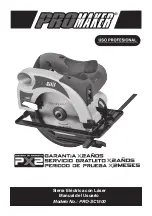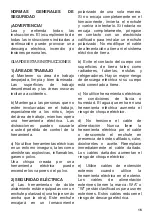
3
c) Make sure the power switch is in
the “OFF” position before plugging it
into the receptacle. This will prevent
accidental starting. Carrying tools
with the switch in the “ON” position
invites accidents.
d) Remove adjusting tools such as
wrenches or keys before turning the
tool on. A wrench or key left attached
to a rotating part will fly off and may
cause personal injury.
e) Do not overreach while operating a
power tool. Keep proper footing and
balance at all times. Good balance
and solid footing enables better
control in unexpected situations.
f) Always wear appropriate safety
equipment. Always wear eye
protection while operating a power
tool. Use appropriate dust respirators,
hearing protection, hard-hat, face
shield or safety shoes as dictated by
the work and tool.
g) When servicing a tool, use only
identical replacement parts. Use
of unauthorized parts or failure to
follow maintenance may create a
risk of electrical shock or injury.
4) TOOL USE AND CARE
a) Secure the work piece with
clamps or other practical methods
to provide a secure work platform.
Holding the work by hand or against
your body is not secure and may
lead to loss of control.
b) Do not use the incorrect tool for
the work. The proper tool will do the
work faster and safer.
c) Do not use the tool if the “OFF/ON”
switch is not working. Operating a
tool that cannot be controlled by you
is dangerous and must be repaired
before use.
d) Always disconnect the power cord
from the electrical before storing the
tool, making adjustments or adding/
replacing accessories. This simple
prevention will reduce the risk of
accidental starting the tool.
e) Store the tool in a secure place
out of reach of children. A secure
storage location will prevent the
unauthorized use by-untrained
users.
f) Properly maintain tools. Keep
all cutting tools sharp and clean.
Remove contaminants from the
tool and keep it clean. Check for
broken parts or binding of moving
parts before use. If damaged,
have the tool serviced before use.
Prevent accidents caused by poorly
maintained tools.
g) Use only accessories recommended
for your model. Accessories suitable
for one tool may become hazardous
when uses on another tool.


